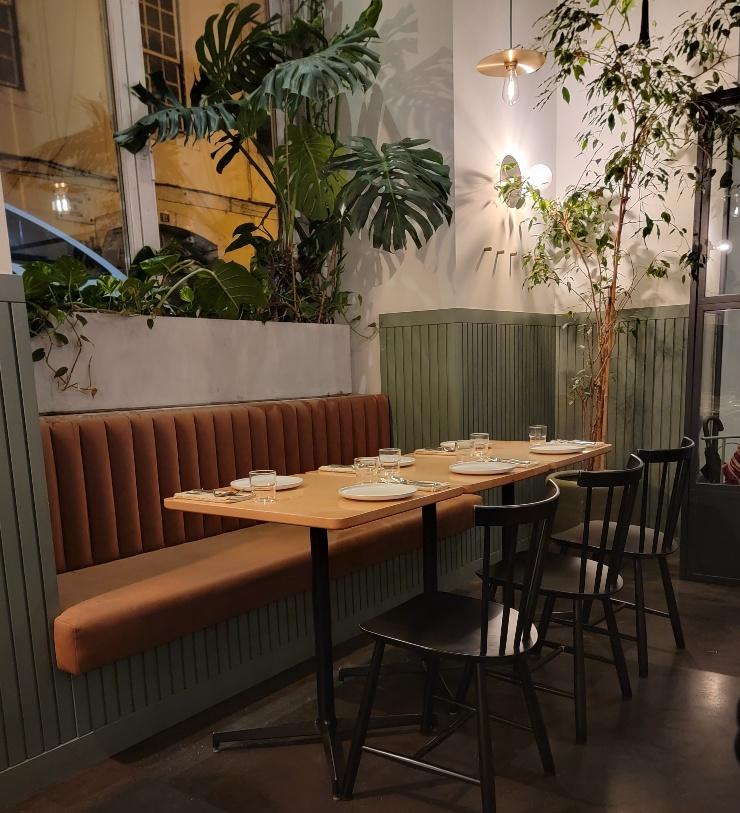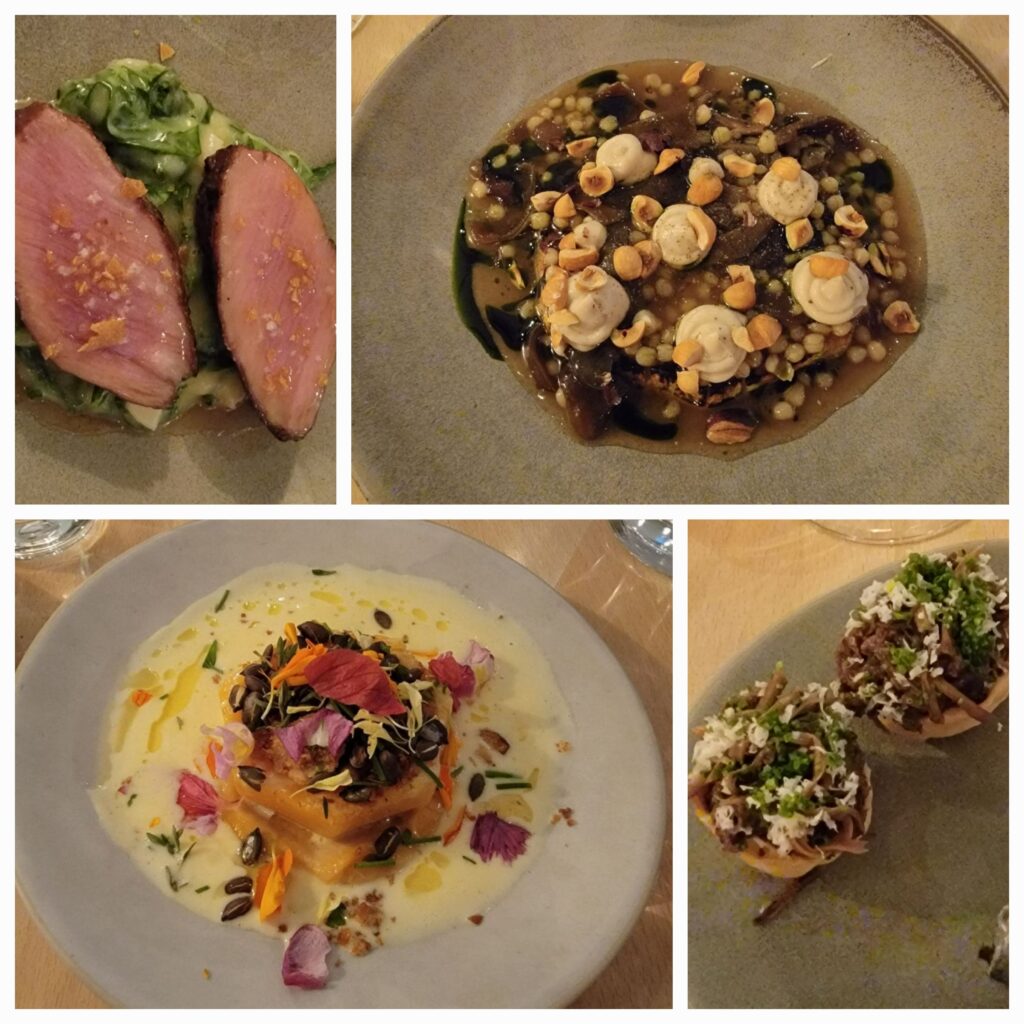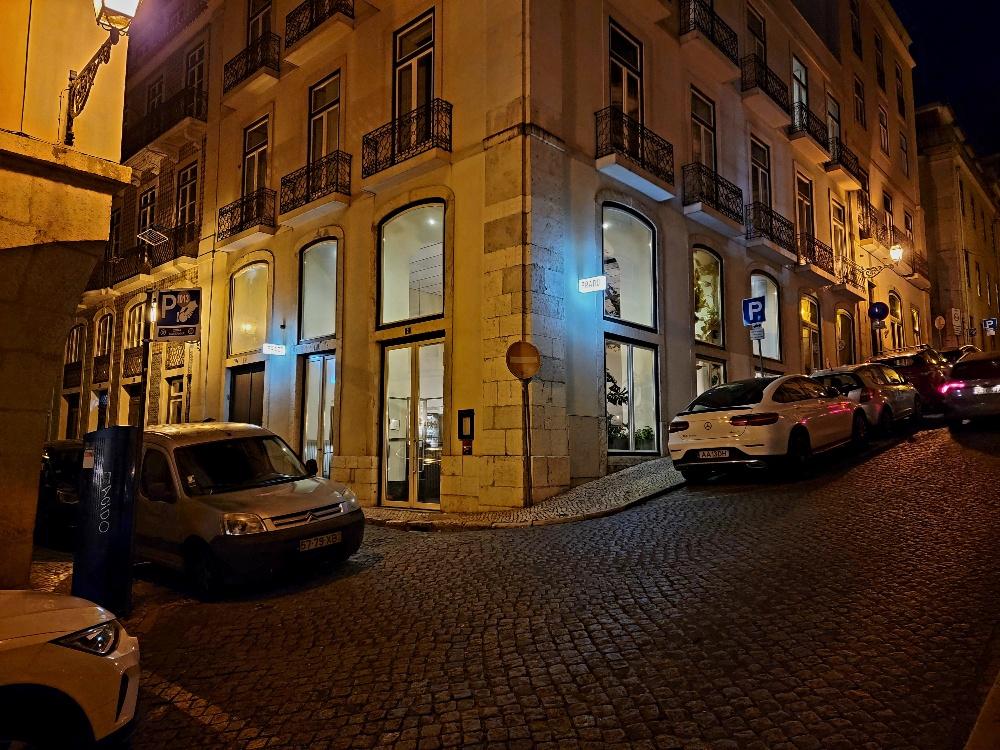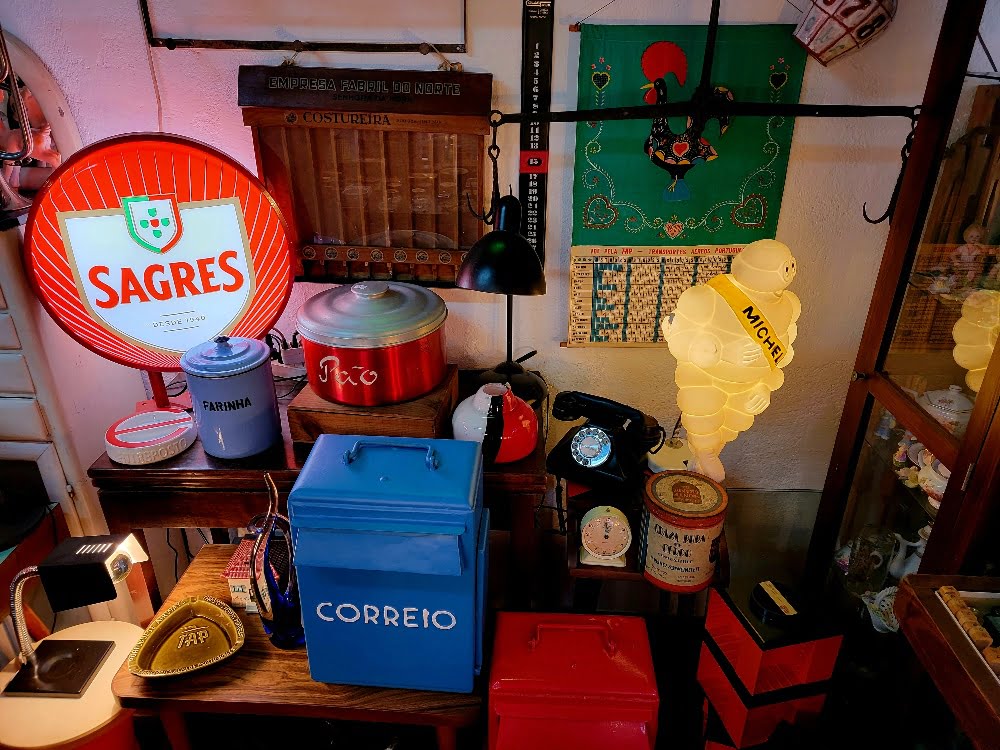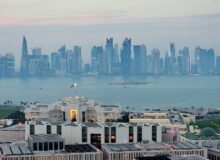About 10 million years ago the enzyme in our bodies used to detoxify alcohol, dehydrogenase…
Natural Wine Disaster
After breakfast we walked uphill past the National Pantheon (which house’s Portugal’s “major historical celebrities” I kid you not, that’s what it is, not a place of worship, and that’s the language used to describe it) to a Saturday market at the Campo de Santo Clara Square. The market is called the Feira da Ladra (or, translated, flea market, but it sounds more elegant in Portuguese).
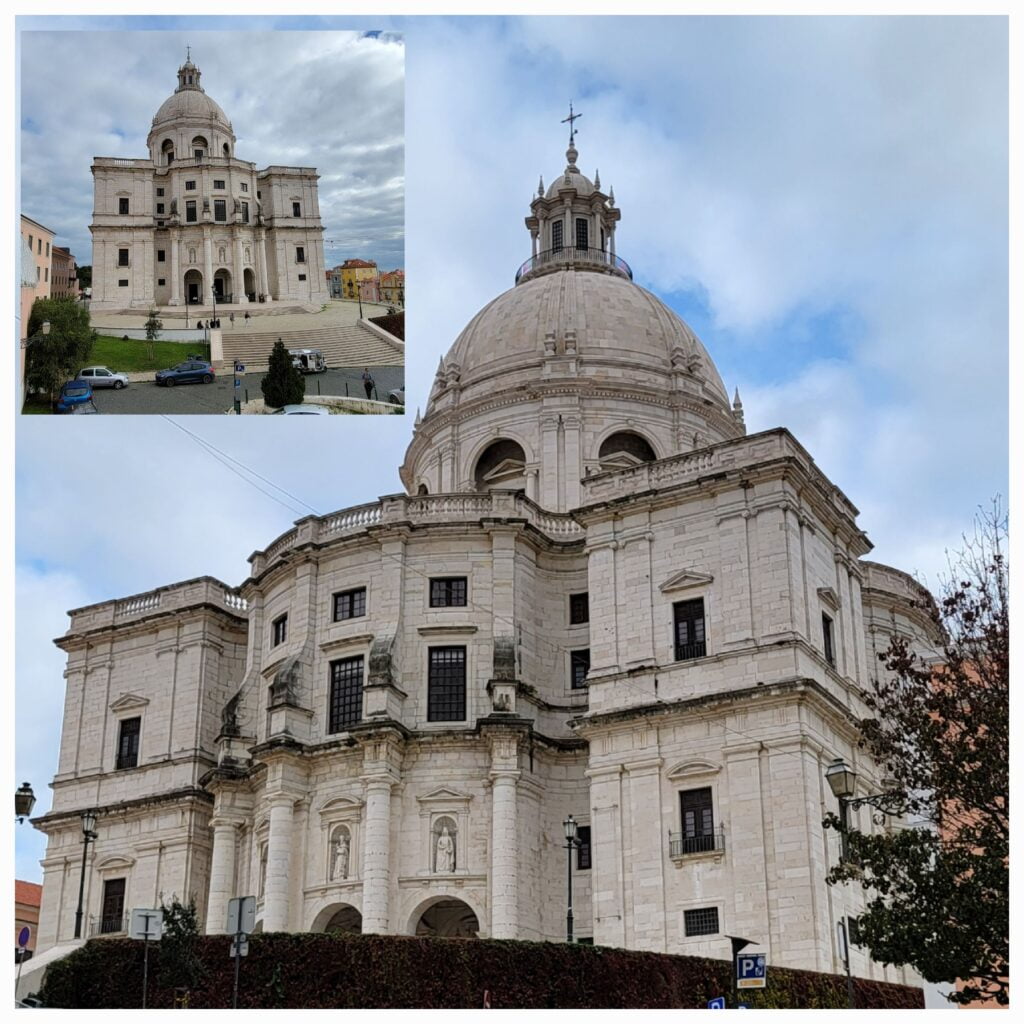
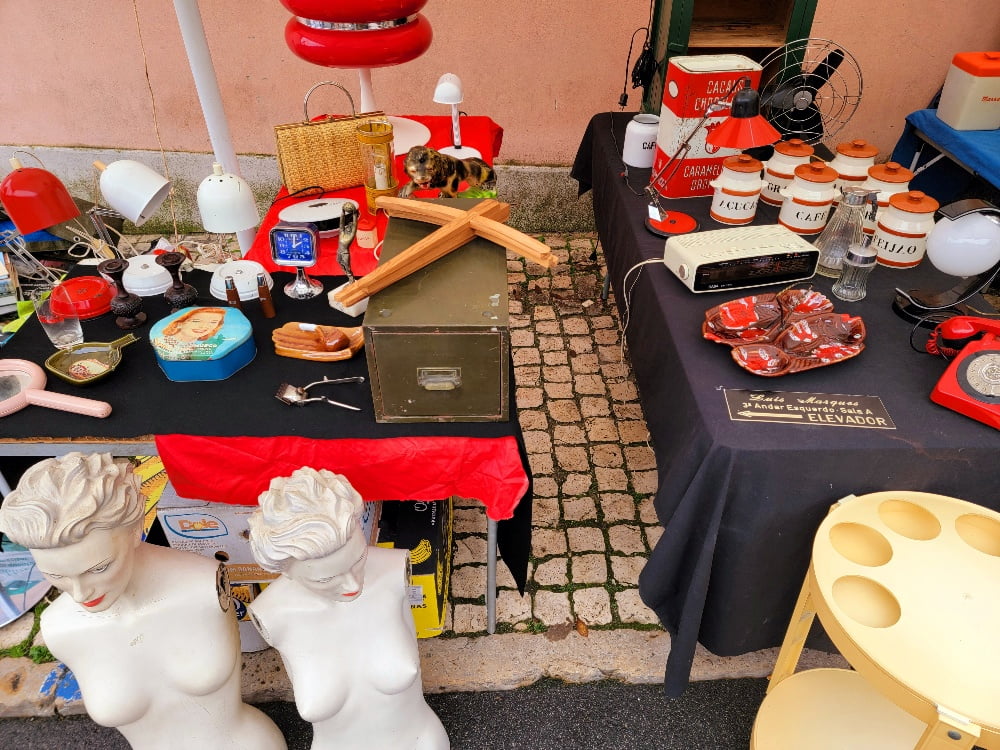
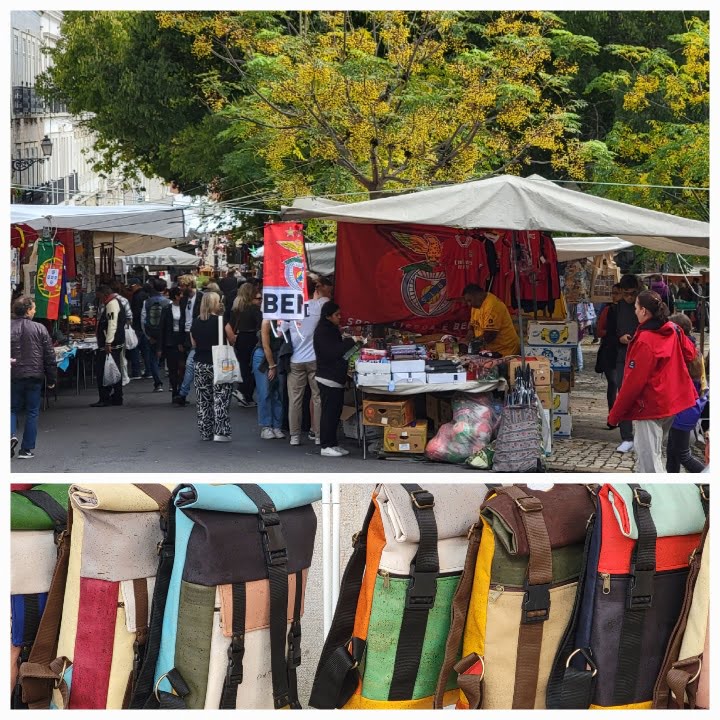
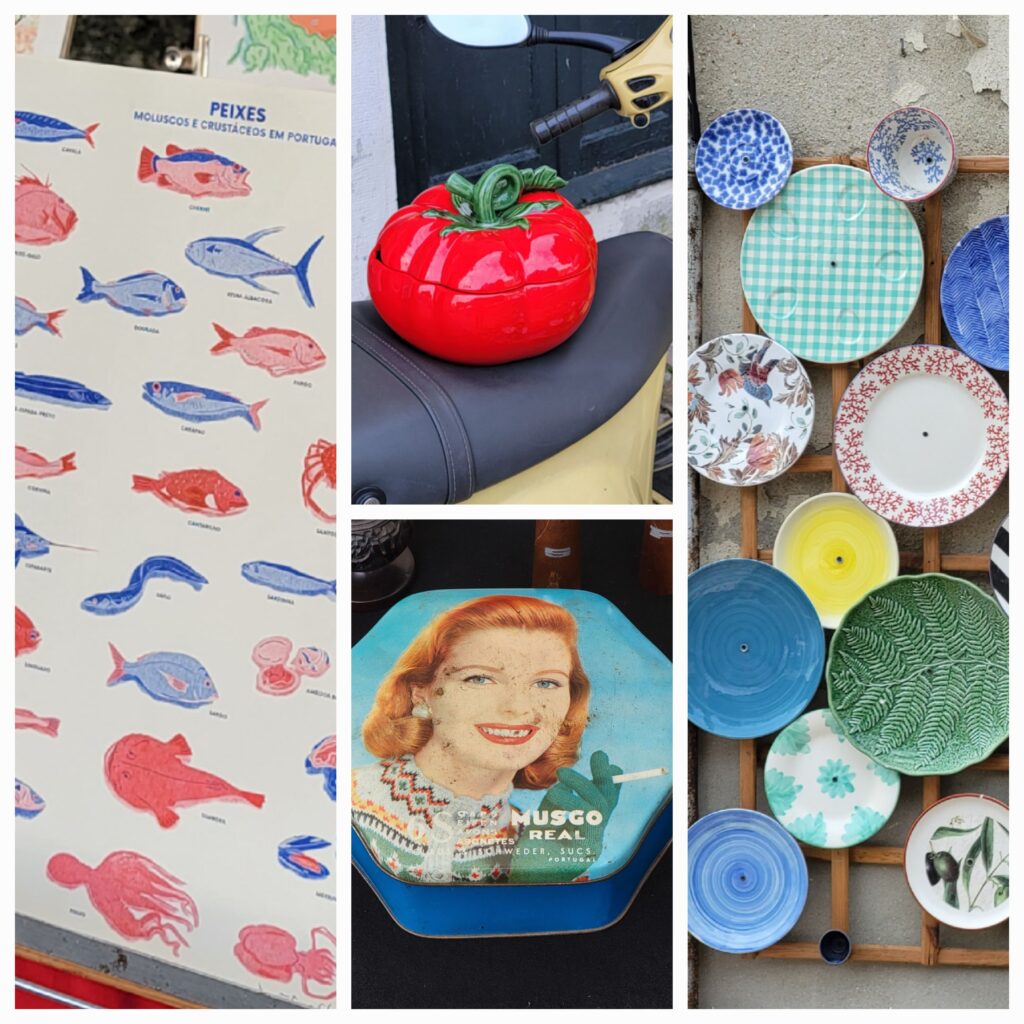
We had a good skinny. There were plenty of trashy stalls, (clothing probably donated in Canada, sent to Africa, and brought back to Europe) as well as local artisans, bakers, and antique dealers. The market is in the heart of the Alfama district, Lisbon’s oldest neighbourhood and which is studded with narrow, go nowhere one way streets and the tiniest shreds of sidewalks.
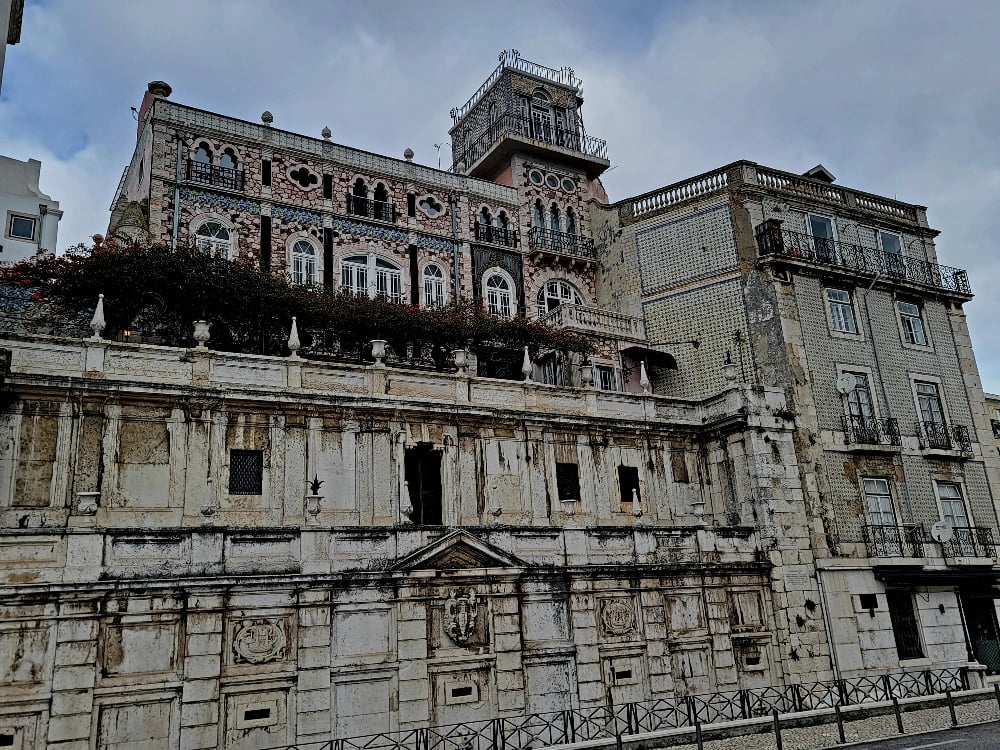
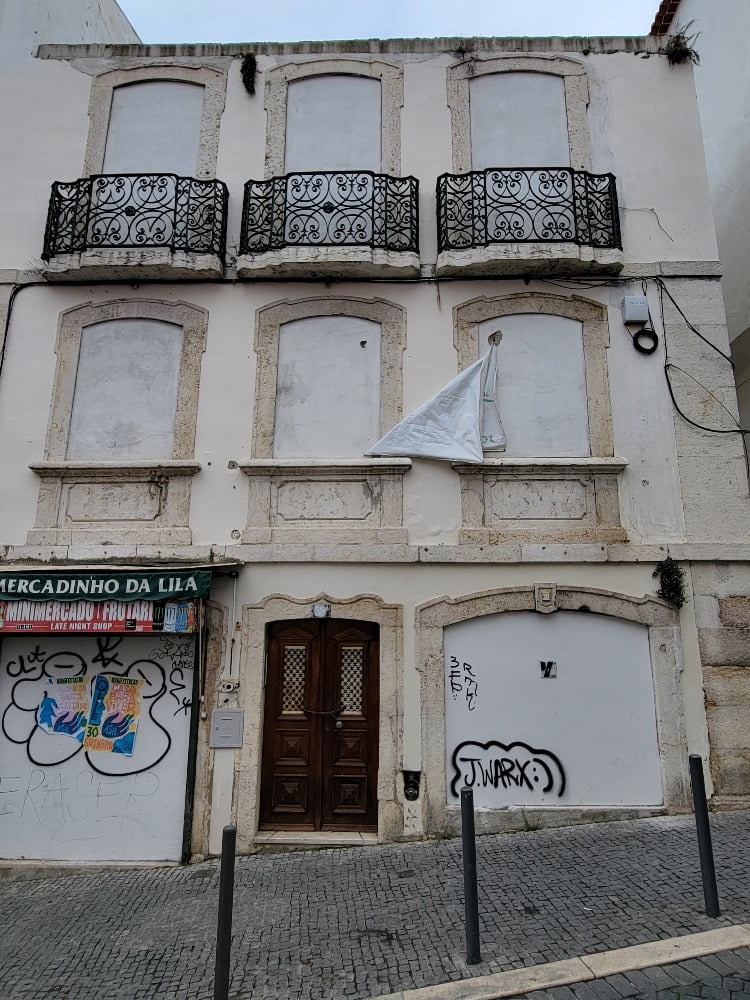
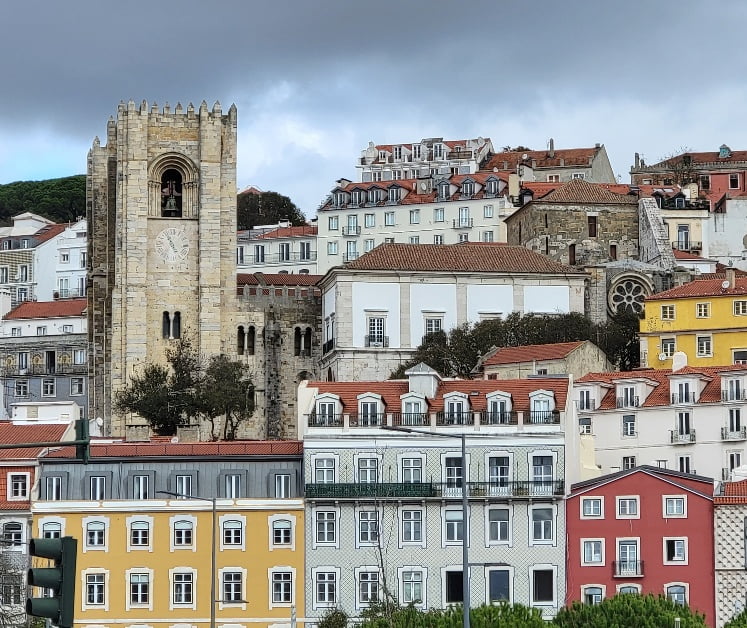
After the flea market we headed down to the waterfront and took the train west. First stop Belem, a district which (as old European cities go) is wide open, with large promenades to walk, cycle and, yes, scooter along. There is a monastery Mosteiro dos Jeronimos, and a renown tower (Torre de Belem) a Moorish fort which was built to protect the trade route. There is also a monument, and prominently so, to the “discovers” who set out to, you know, discover, convert, ransack, colonize, and so forth.
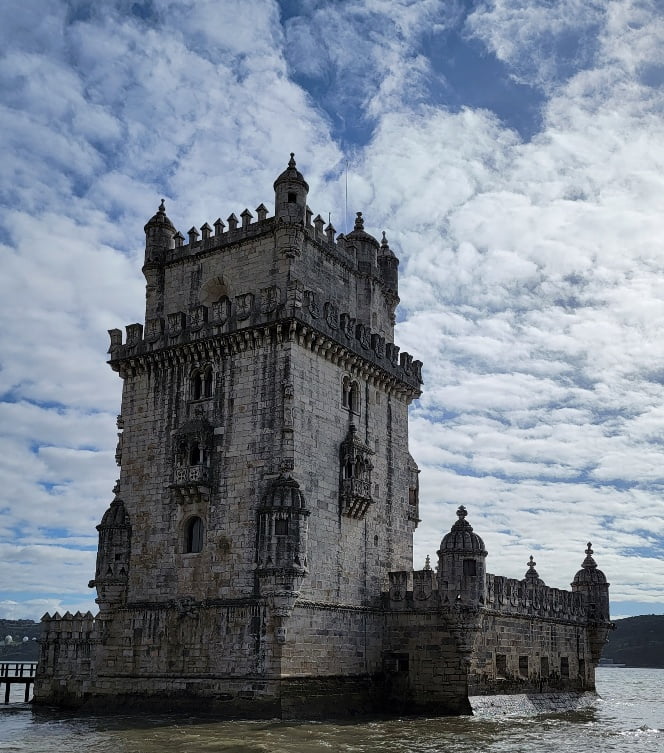
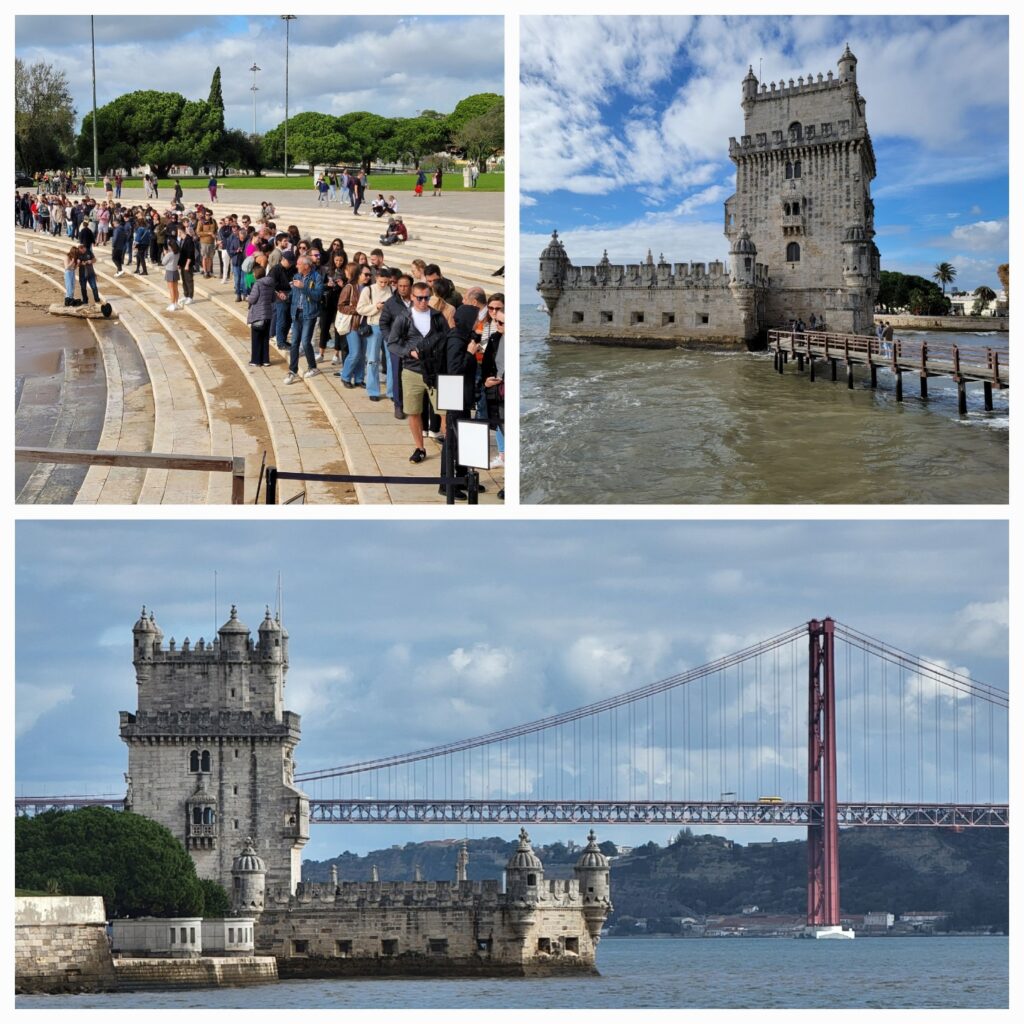
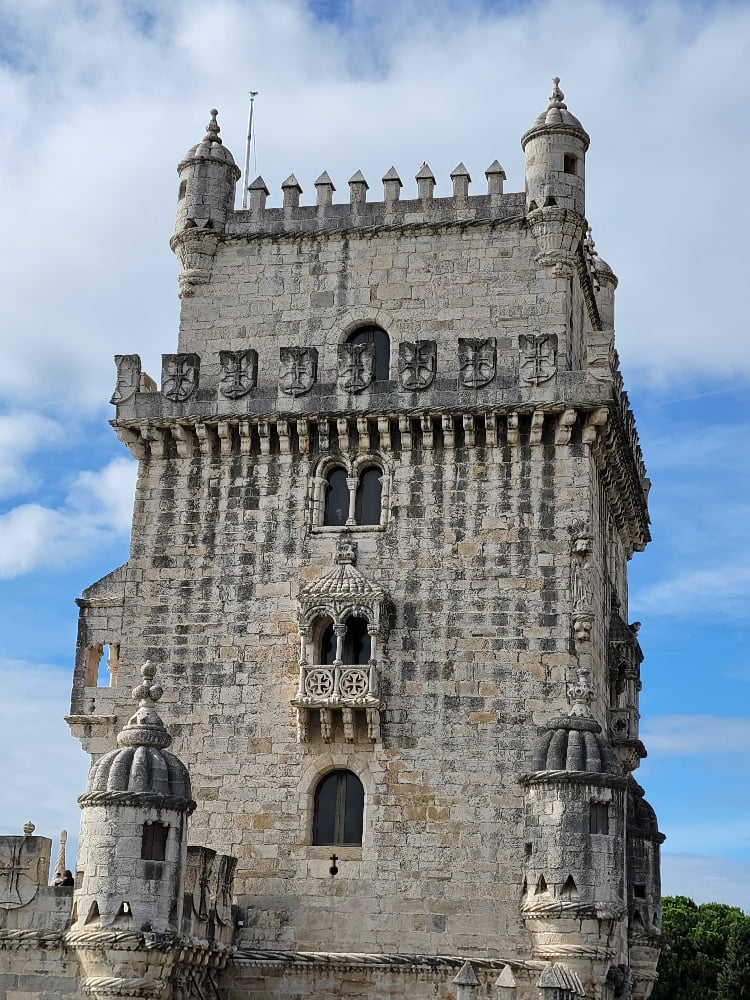
The monument was originally conceived as an exposition in the 1940 World’s Fair but, I guess like Vancouver’s Science World, some things last. You’ve got your images of Vasco de Gama, of Magellan, of discovers, conquerers, captains and pilots and whatnot, and all manner of people that, back in Canada, would probably be pilloried or vandalized. I mean if the Vancouver Park Board could claim a pier at Jericho Beach is a symbol of the “colonial structure” which upon removal would show the Board’s commitment to “decolonization and reconciliation” I mean what would they make of the tower? The Wikipedia entry has the telling phrase “a romanticized idealization of Portuguese exploration” which kind of says it all.
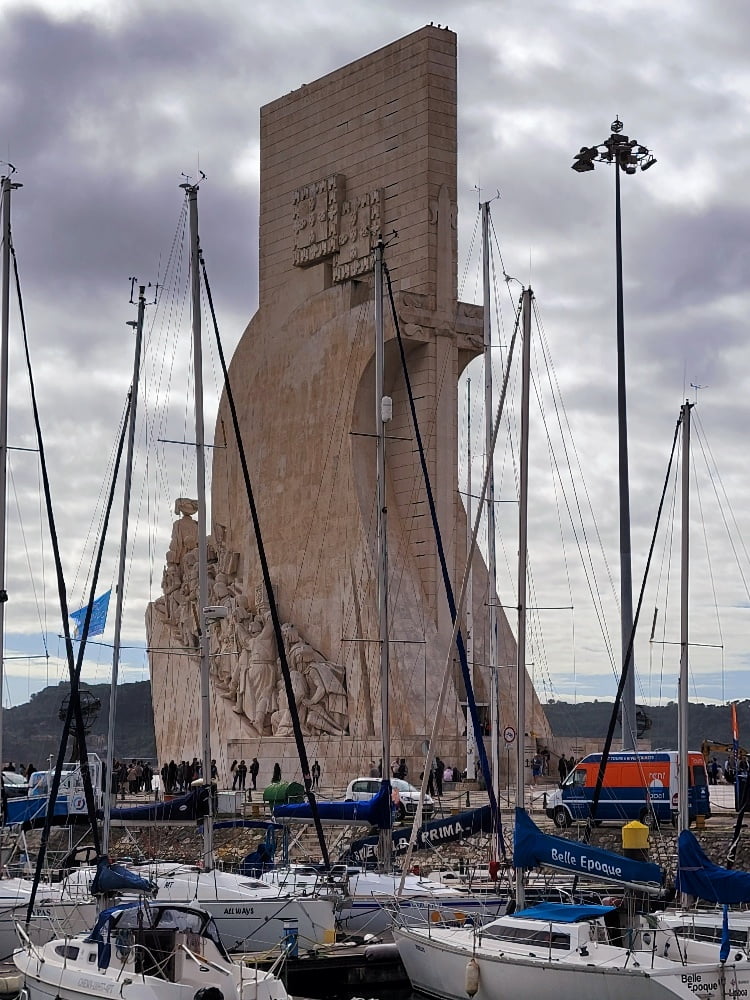
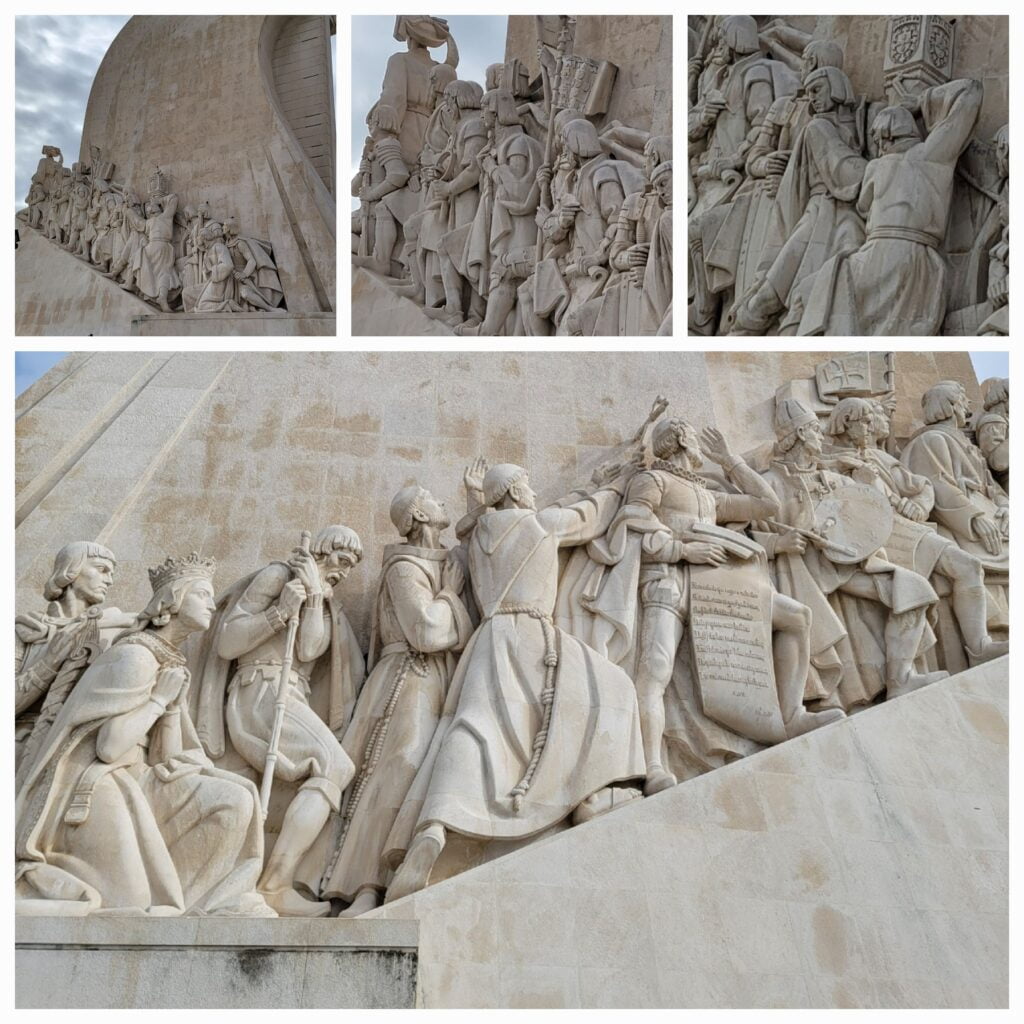
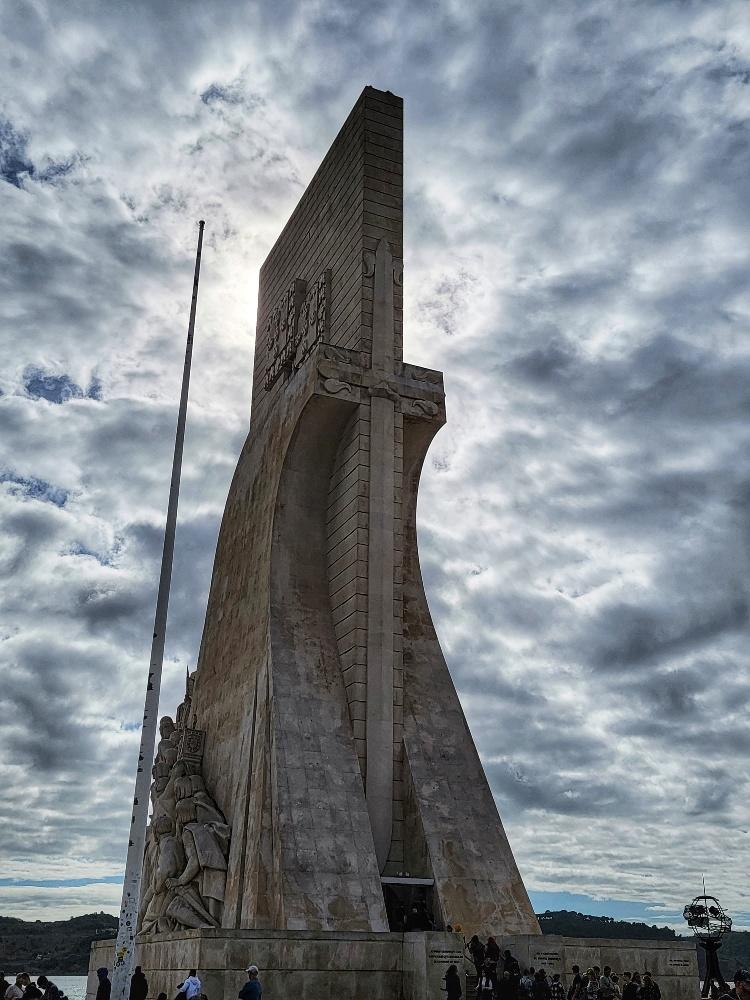
After that, we continued to walk the waterfront to the next train station. It took about an hour. From there we caught a commuter train, continued west, several stations out into the deepest western suburbs beyond the mouth of the Tagus. Despite the clouds in all these photos it was hot. It was 23 degrees C and that’s before the humidity. It was humid.
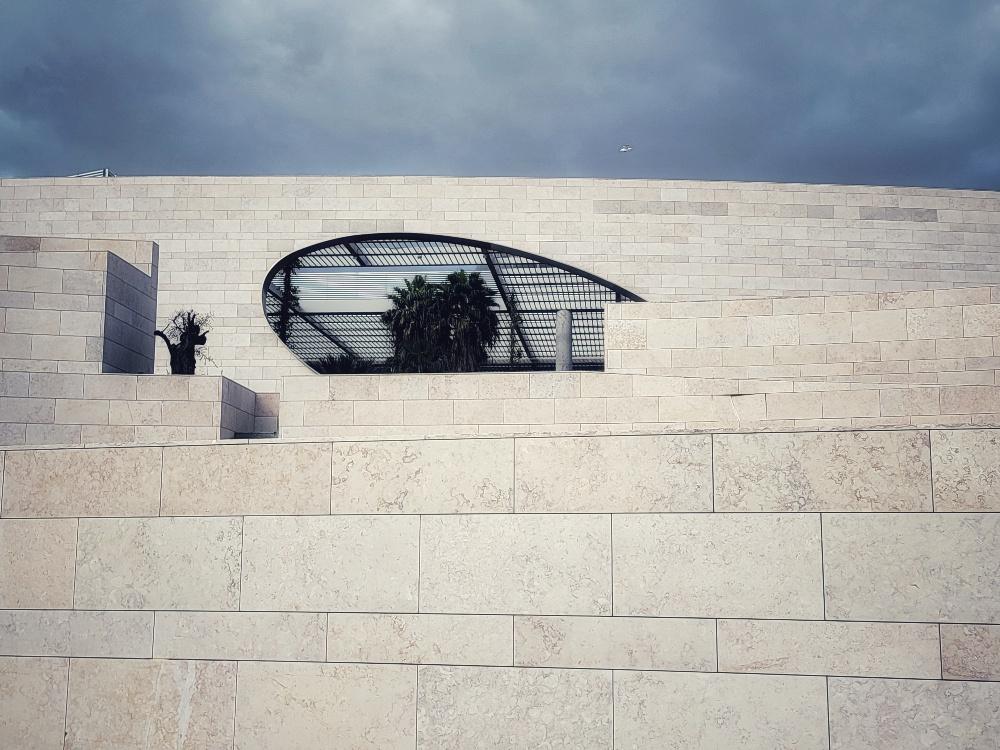
We decided to walk part of the Oeiras seafront, a sort of Stanley Park seawall which runs along the western beaches (which of course they call the southern beaches).
We walked east towards the centre, for about an hour, then caught a train back into the centre, had a beverage break on the piazza, then freshened up before dinner.
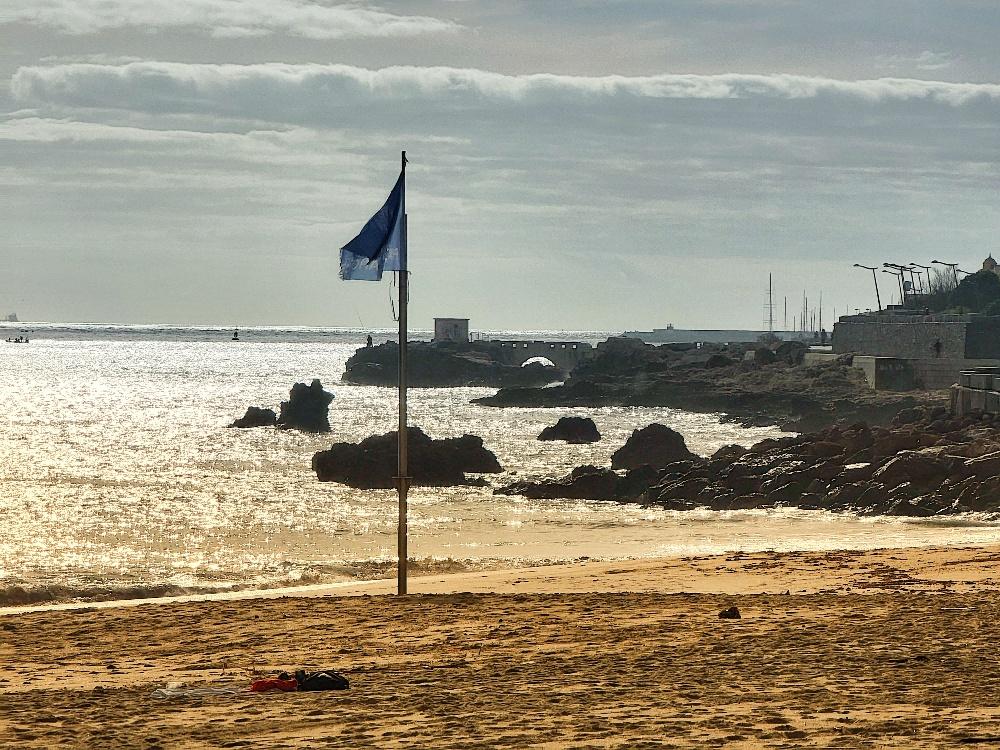
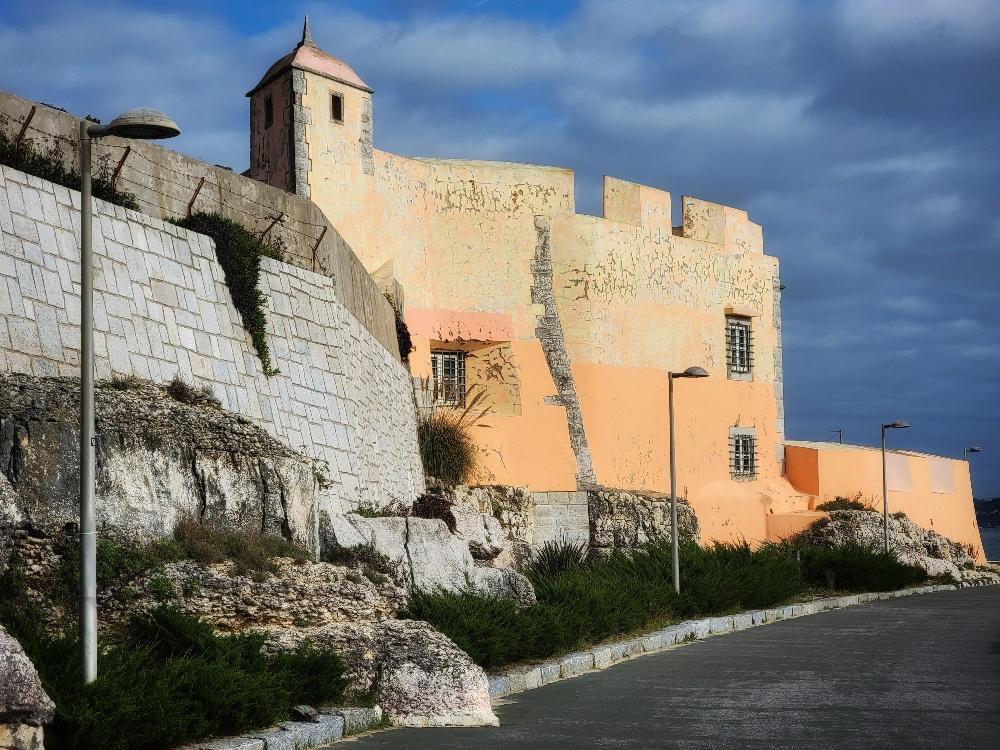
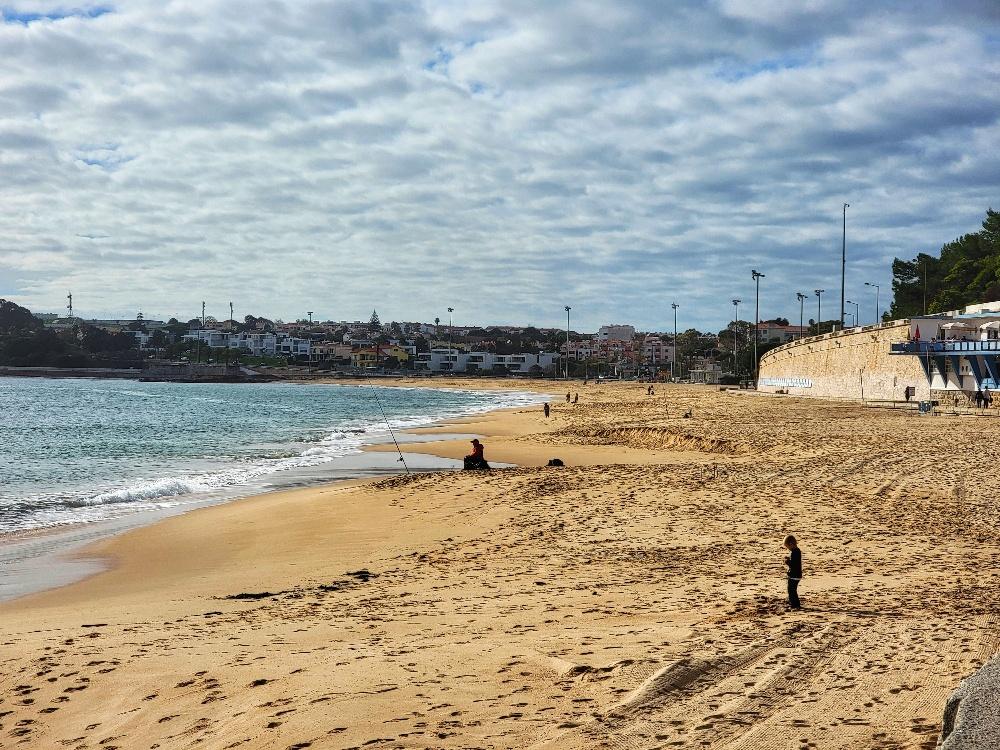
We walked uphill (always uphill) to a place called Prado for dinner where the food is all sourced locally and the wine list prides itself on being natural. If there’s one restaurant with a focus on natural wine there’s a thousand. Natural wine. If there’s a metaphor for this holiday, whether London, Paris, Porto or Lisbon, it’s that the natural wine movement is an affront.
The food however: The food was gorgeous, spectacular. Luscious beef tartlettes with pickle; a wonderful butternut squash in a milky toasted butter sauce; a celeriac steak with wheat berries, hazelnuts and mushrooms; acorn fed Portuguese pork with turnip and turnip tops.
And, not pictured, mushroom ice cream (not a typo; Stephen’s choice) and a brioche with salted caramel ice cream and a Madeira sabayon. Wow.
Natural wine. The intent is decent enough, even if the actual wines are almost never satisfying, just novel. According to Cork it Pure, in California a winegrower can put 68 ingredients in a bottle of wine—and only list sulfites. So yeah, the quest for points is a mania and winemakers are ignoring consumers and, arguably, the tradition of winemaking in pursuit of the spoils which come with a high points wine. It’s laudable there are growers (and consumers) interested in a less doctored bottle of wine. I’m one of them. But the “movement” is also crazy off the rails. I mean let’s say you went to the store and bought some chocolate and when you got home and opened it the flavor was ginger; I think you’d be annoyed. But if the chocolate maker told you they let the ingredients develop naturally, and sometimes chocolate tastes like ginger not chocolate, and they have the least amount of intervention of any chocolate maker out there, you’re either going to be doubly annoyed or embrace the lunacy. Why not just sell a chocolate bar that doesn’t list chocolate at all? Guess what, that’s exactly what half the natural wines have on their labels; unusual art, abstract graphics, esoteric names. It’s like Euclidian geometry, it’s not wine.
The worst part of it all is that you won’t stumble across a restaurant with a selection of natural and “regular” wines. It’s an ethos, it’s a buy in to an idea, it’s basically become a religion. And there is this belief amongst the natural wine enthusiasts that they represent everything the “old order” can’t deliver, and they are revolutionizing wine for the betterment of the industry. Maybe. There’s some good in almost every sincere endeavour. But one of the orders they are upsetting is the god of Robert Parker and while he drove a particular style into the 90 plus point hell of hysteria as well, and his palate which veers to anything over 15% alcohol is loathsome to many of us, myself included, at least he demanded modernization at vineyards and standards in the bottle.
The trend setting, rebellious, magnificent chef David Chang, recently shuttered Momofuku Ko in NYC. He served excellent food at a reasonable price and went head-to-head with the top (and most expensive restaurants) in the city. At least initially. Times changed; he closed a restaurant which had become fancy, expensive, and much like the pigs and humans at the dinner table in Animal Farm. As Pete Wells put it in the NYT following the closure, despite Chang being a rebel, “anyone who has studied the history of revolutions could have told us that rebels who aim to overthrow the old order don’t take long to start dressing and acting like the former ruling class.”
Every time we are in a restaurant serving natural wine I ask the sommelier what the varietal is. They look at me perplexed, as if it’s irrelevant. It’s a bottle of natural wine! Accept if for what it is! Don’t be such an old person! (BTW, I am an old person. It’s my authentic self, to borrow from the young…) Hey, I feel like saying, would you accept a professional architect to pilot an Airbus? At Prado they served a Loire Cabernet Franc by the glass, a wine that is already funky, like drinking in the stable, next to a saddle, which can’t be natural-ed up too much, and that served the purpose. But after this trip, when I get home, I’ve got an order of French Grenache, no filtration, no fining, but all red wine, waiting, and that is both something natural and predictable and hugely satisfying.
